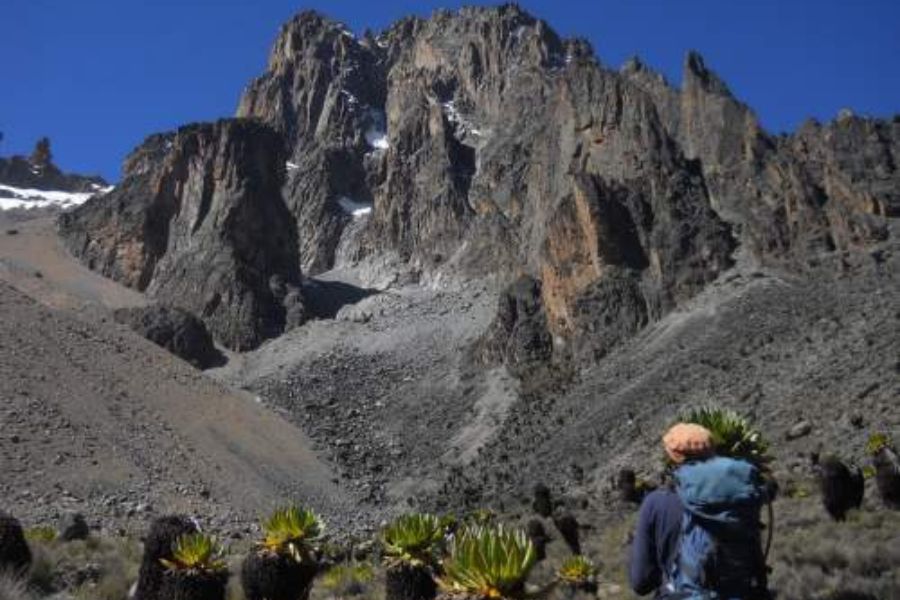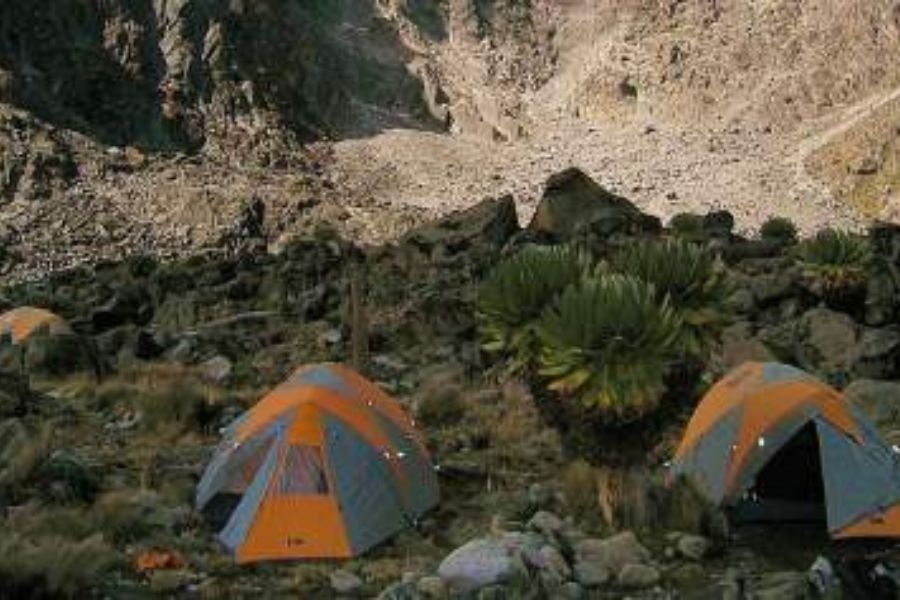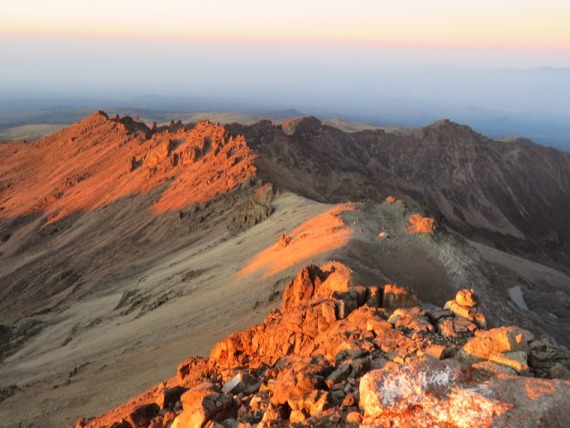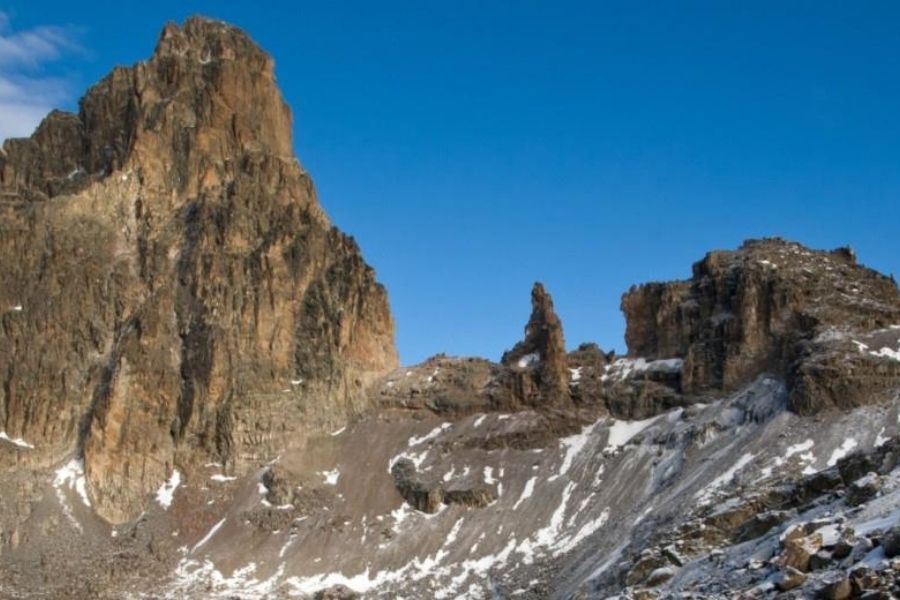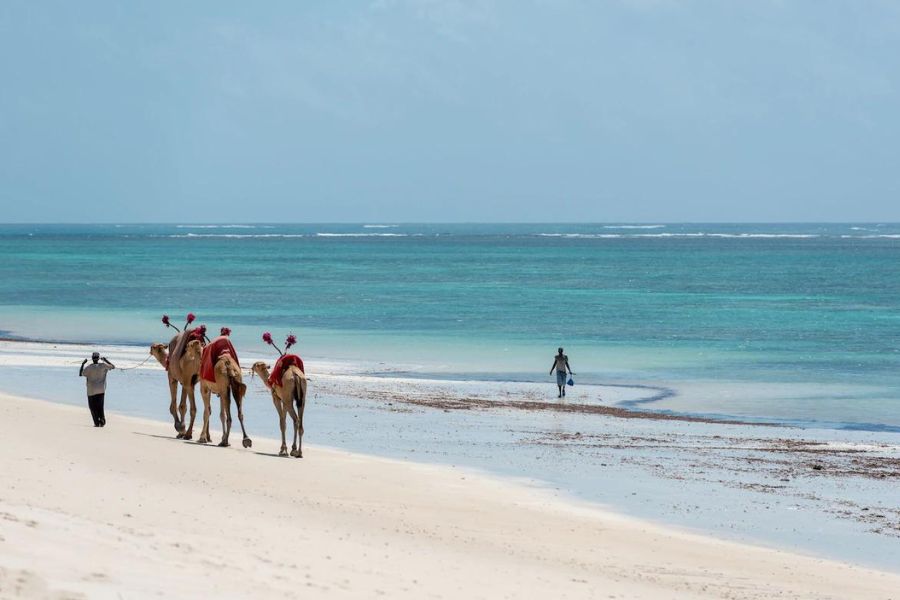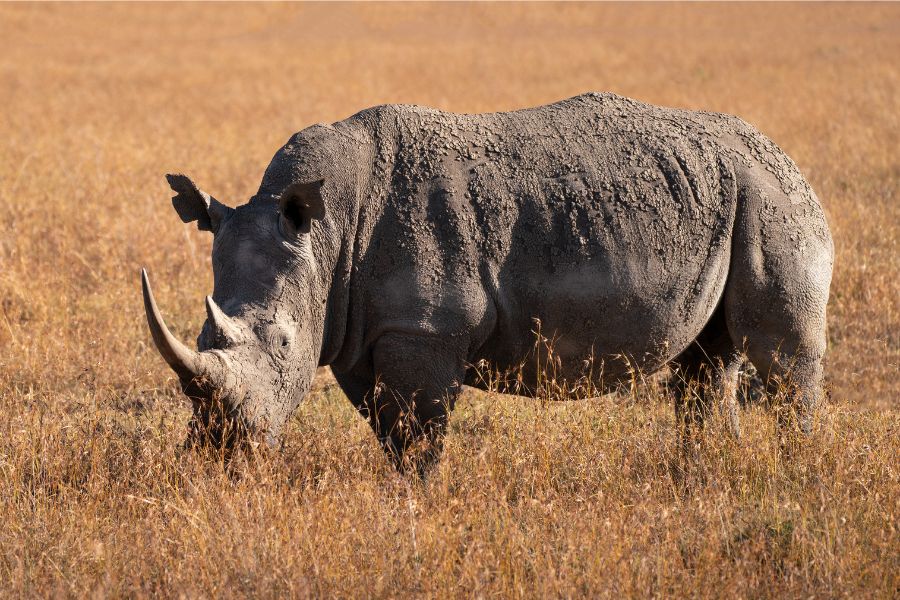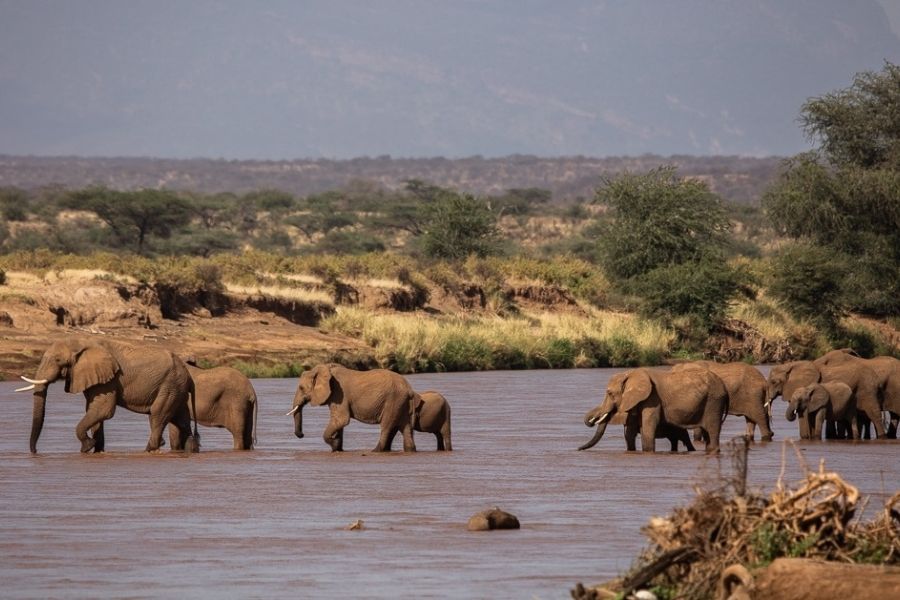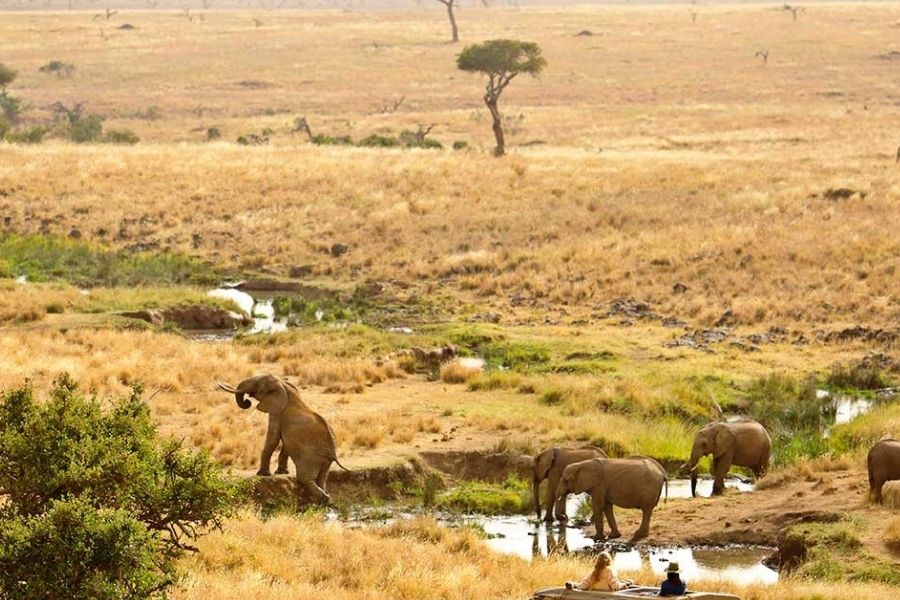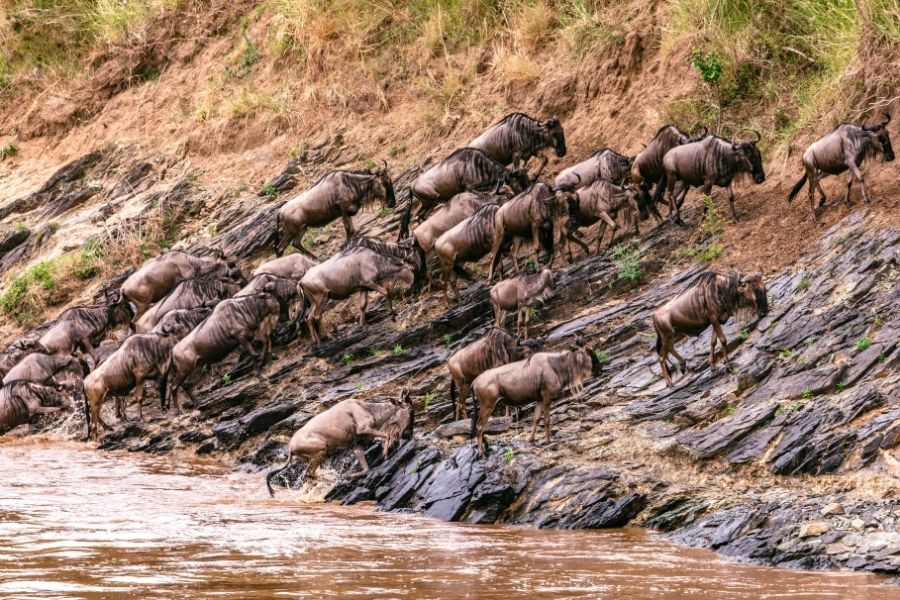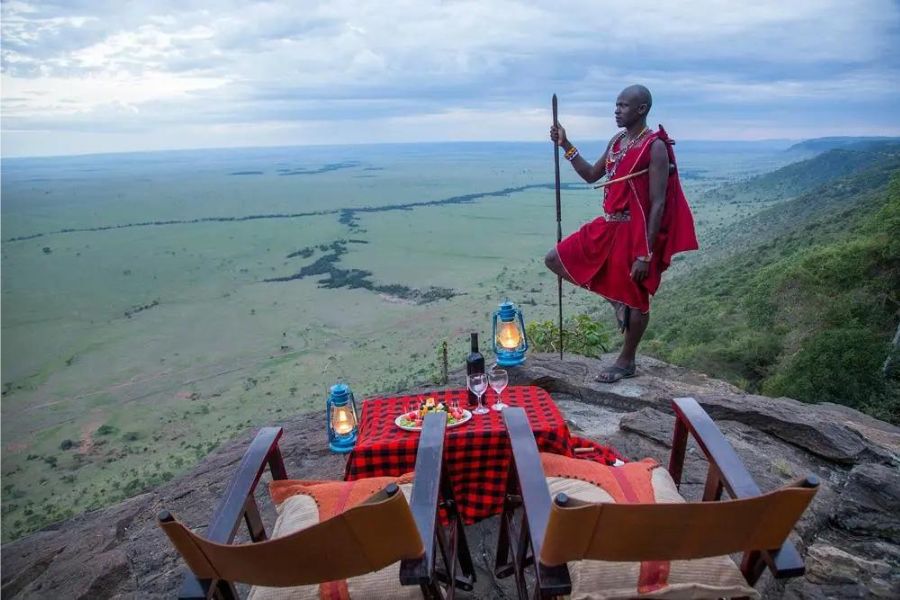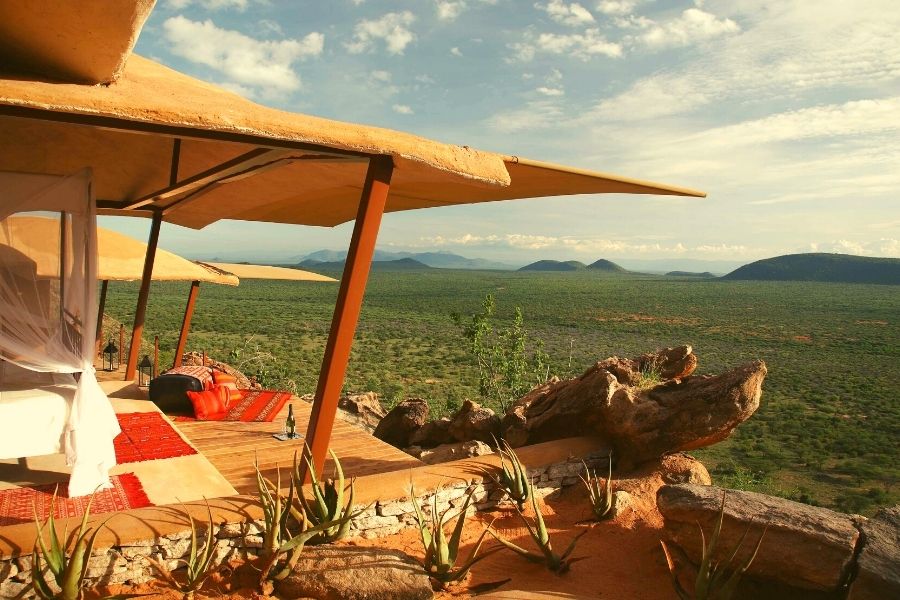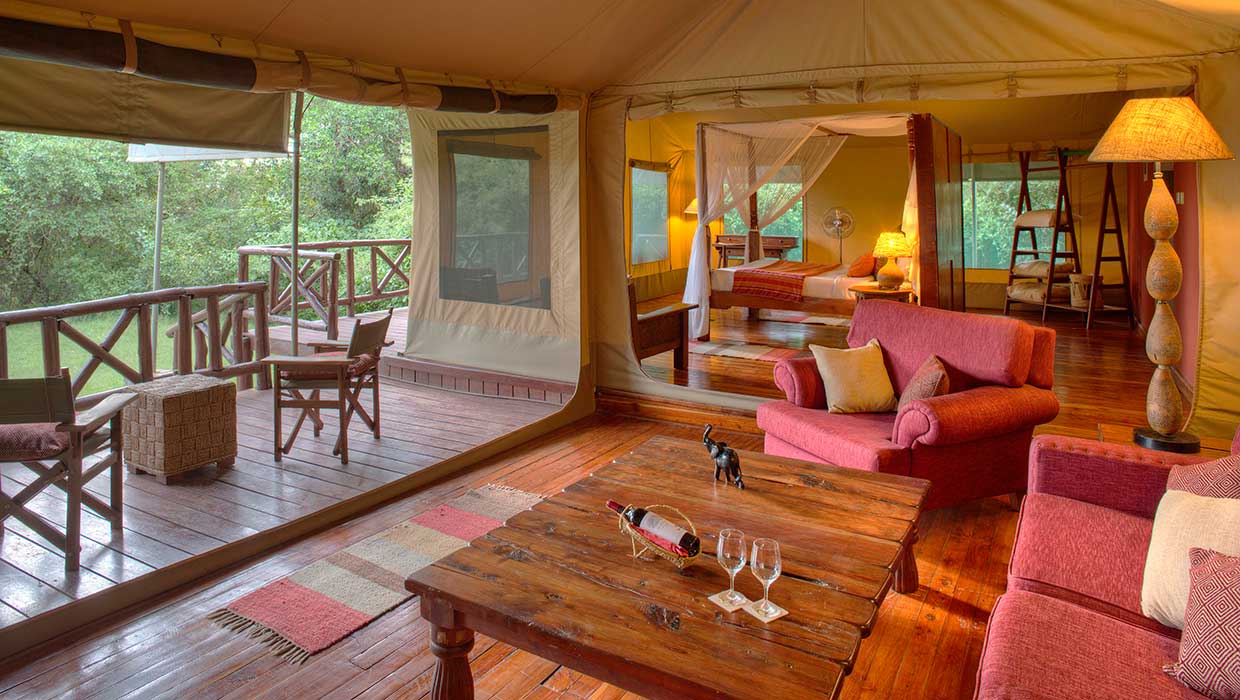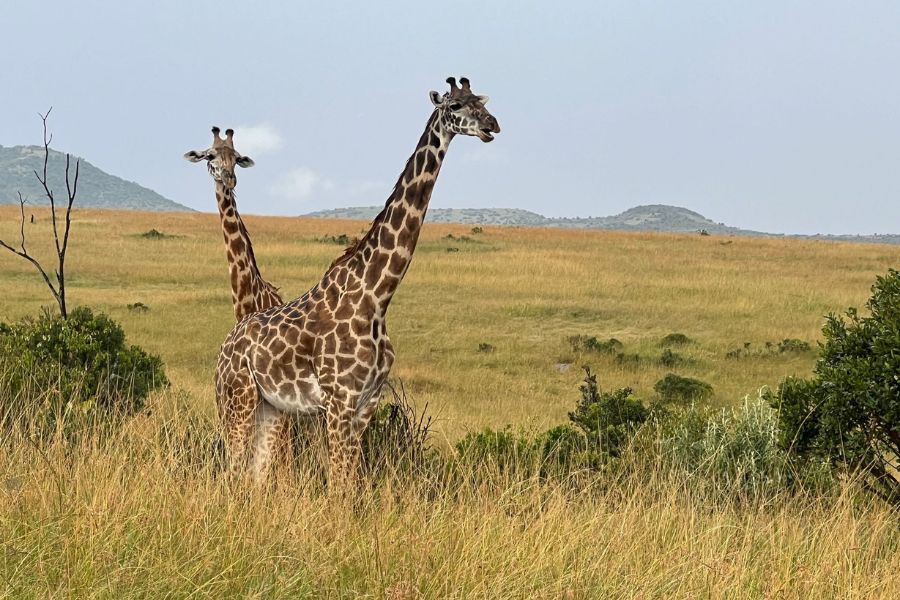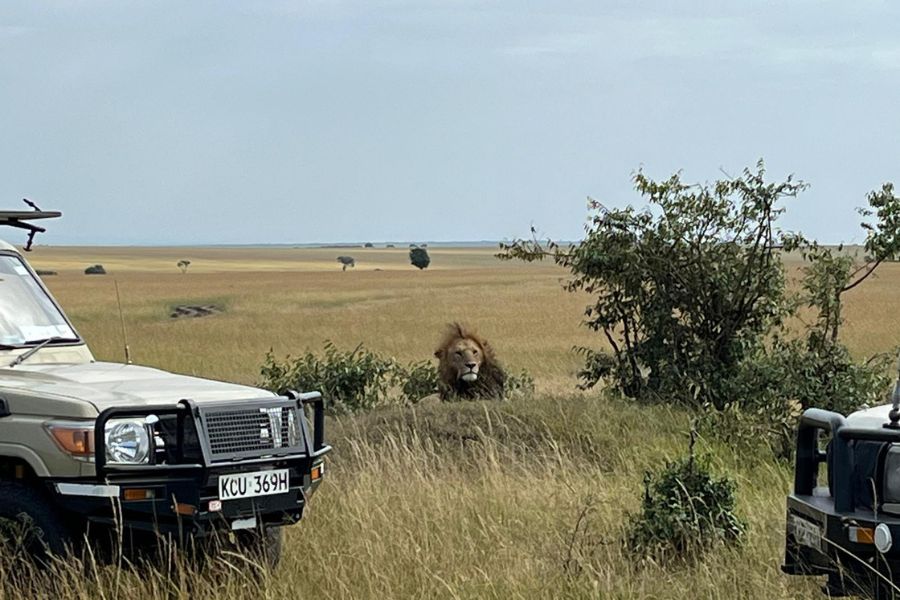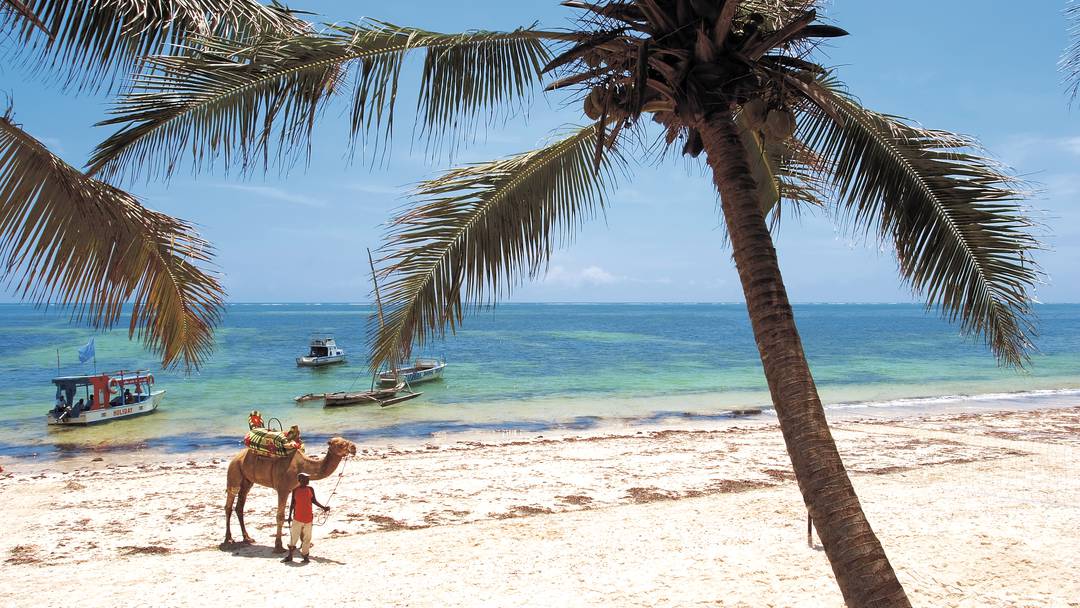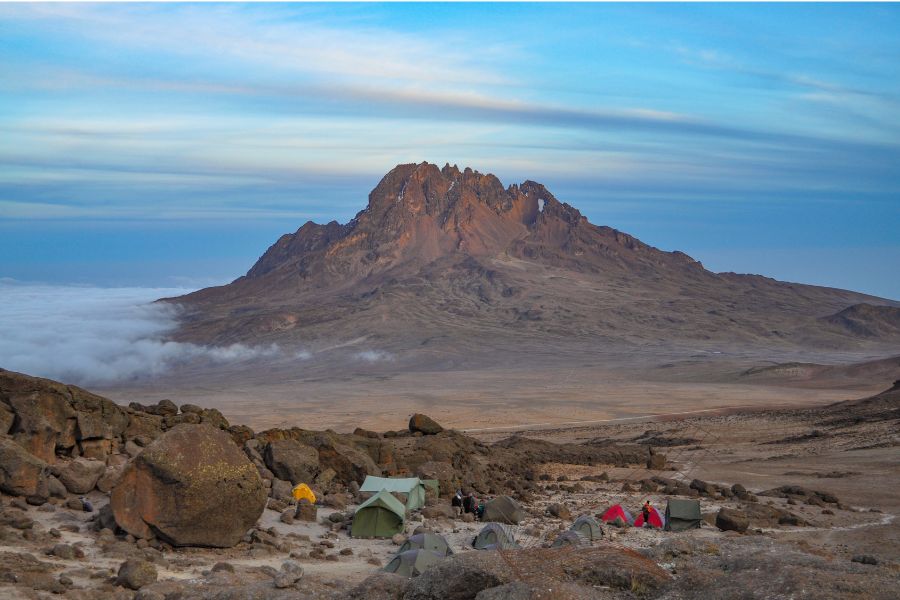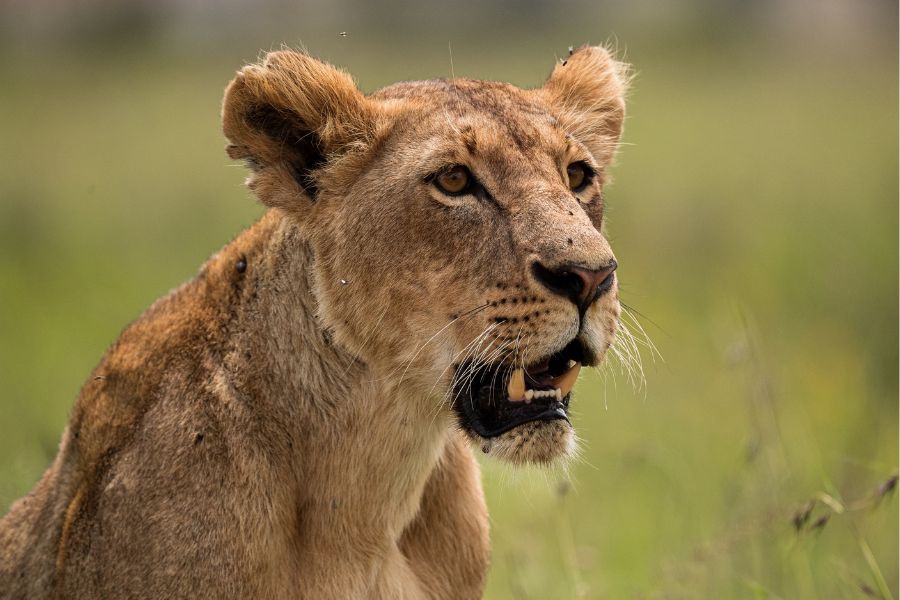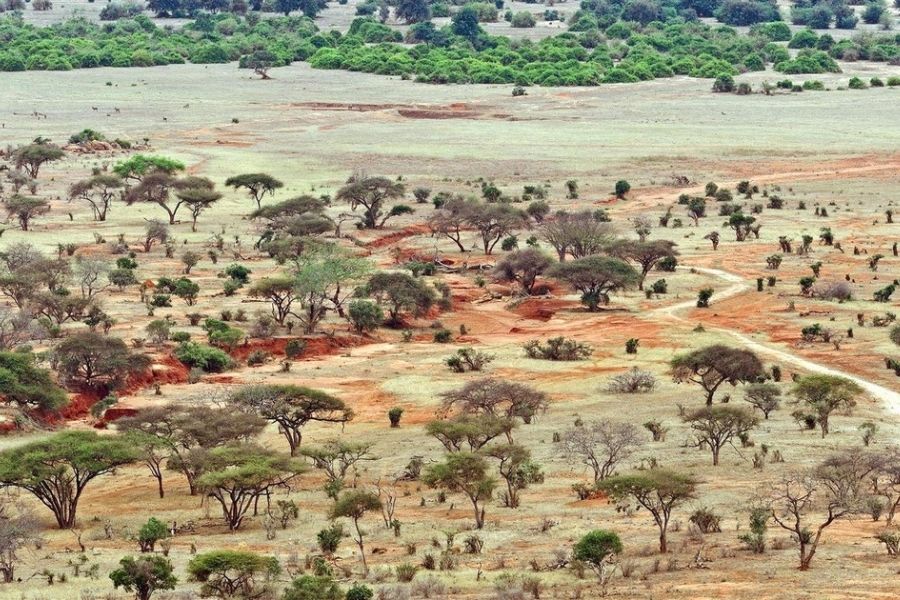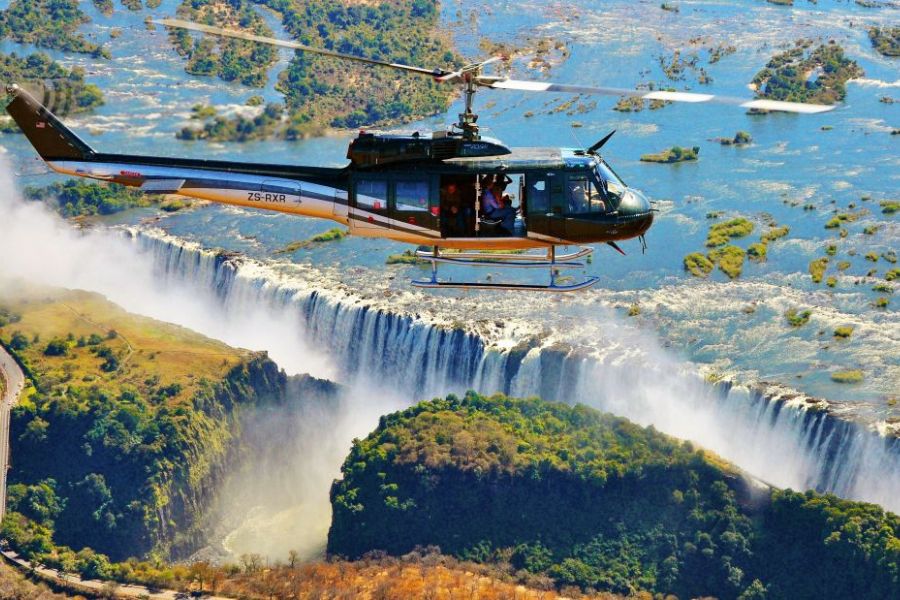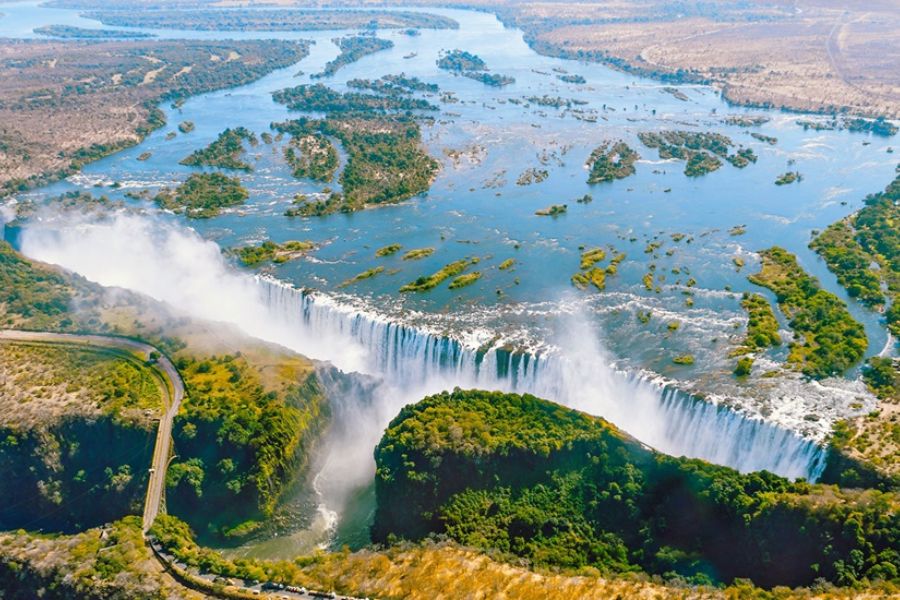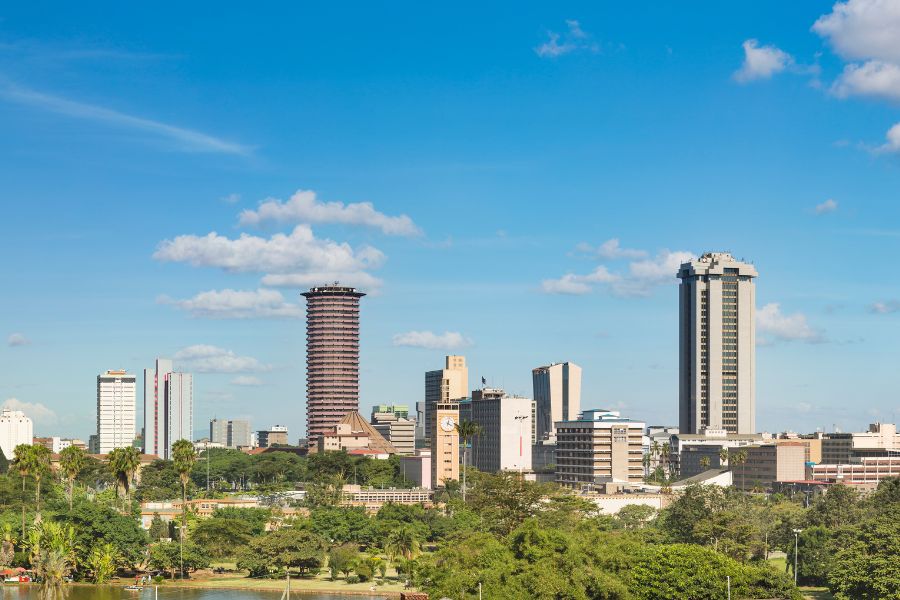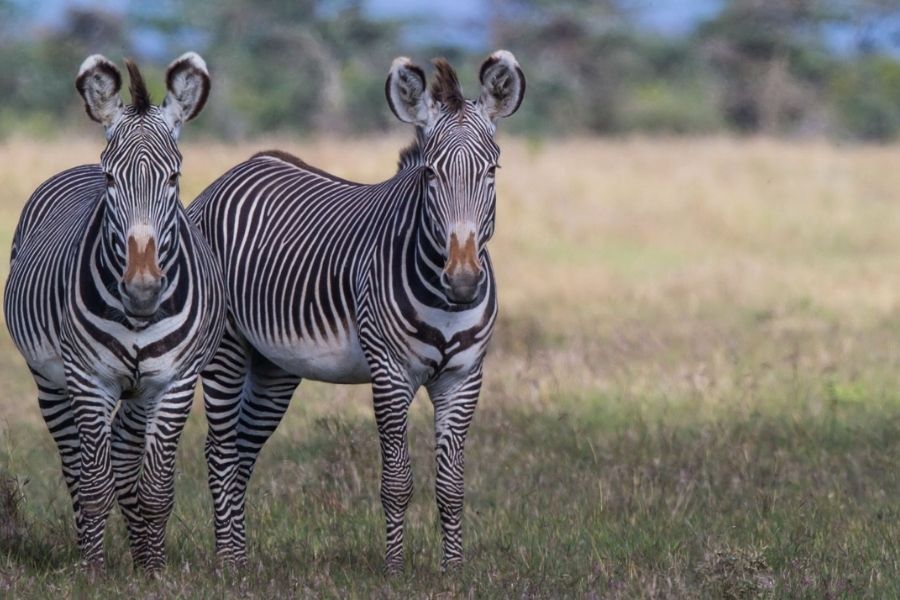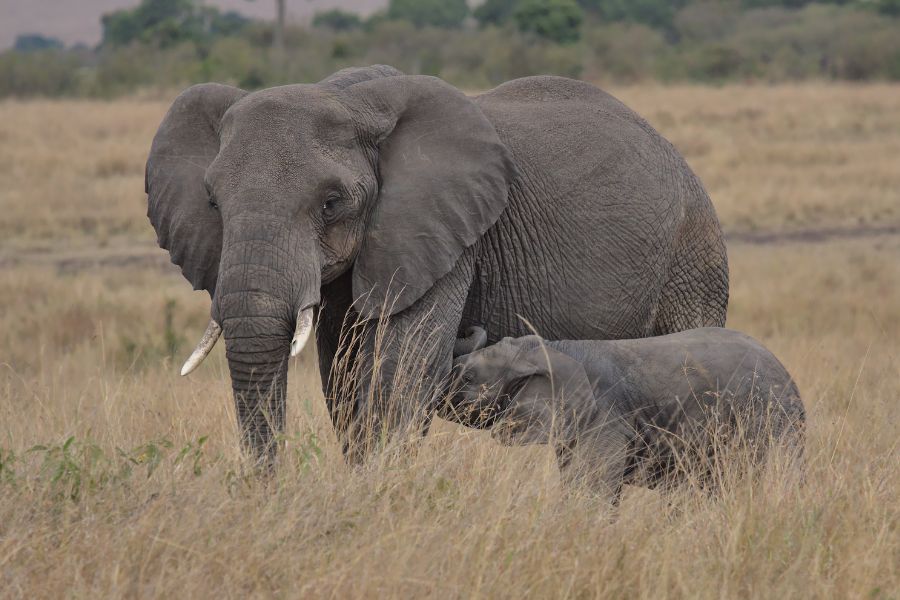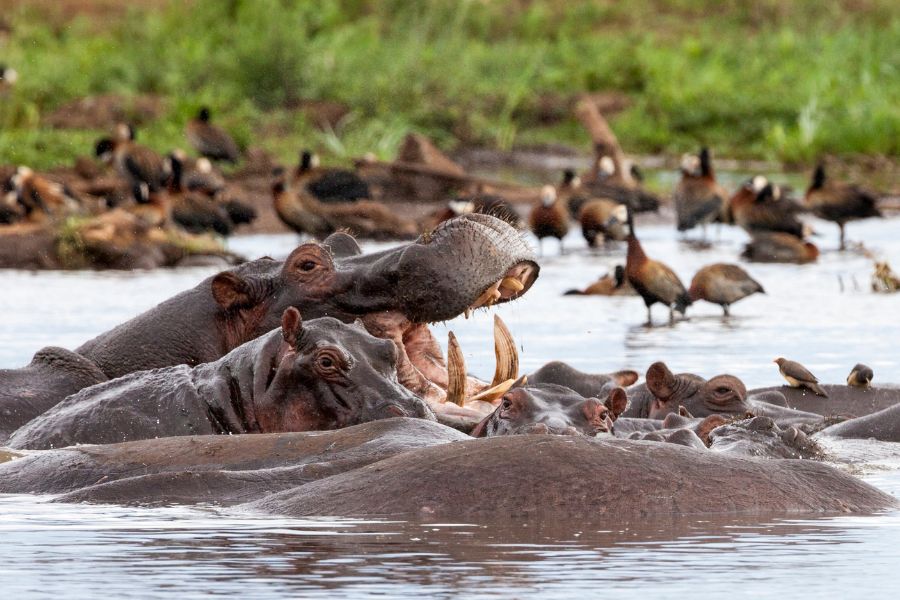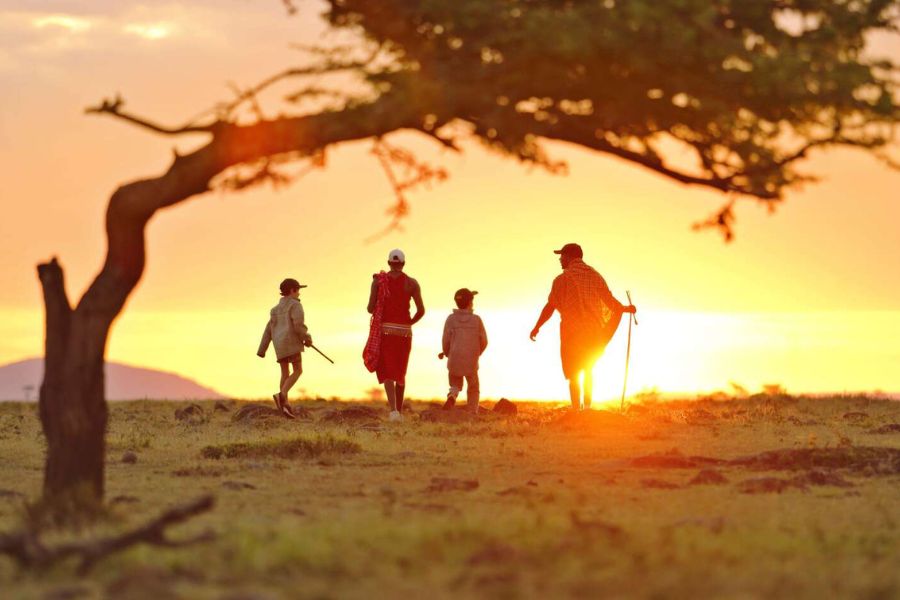HIGHLIGHTS.
The Sirimon - Chogoria Route is a 5-day trek more scenic than the Naro Moru route. It is located on the dry side of the mountain (Mount Kenya National Park) and offers some of the finest walking experiences.
The course begins on the mountain's northwest side near Nanyuki at Sirimon Park Gate. Access is adequate, and the bunkhouse facilities are the best on this side of the hill. The last night of the trek is spent at the comfortable Mt Kenya Bandas, equipped with well-deserved hot and cold showers.
The Sirimon route passes through the driest side of the mountain and starts from the west of Mount Kenya National Park. On this ascent, trekkers encounter giant trees, rocky terrain, and the charming Mackinders Valley before descending via the Chogoria route.
While landing on the Chogoria route, you can spot the characteristic lush bamboo zone and the highland forests while gazing at the magnificent Gorges Valley, waterfalls, and tarns.
Mount Kenya is situated in the eastern Great Rift Valley and is the second-highest mountain in Africa after Kilimanjaro. Like Kili, it is an eroded stratovolcano with glaciers on its highest peaks. However, unlike Kilimanjaro, only Point Lenana at 4985 meters (16,355 feet) is accessible to trekkers as the lesser of the tri-peaks.
The higher peaks, Batian and Nelion, are technical vertical climbs requiring Class 5 technical climbing skills. AfricanMecca Safaris offers guided trails to Lenana Peak, often as acclimatization trips before attempting the Kilimanjaro climb.
However, we advise teaming up with specialist rock climbing guides to ascend higher unless Class 5 clients with known expertise make special requests.
Mount Kenya National Park is reached by road or air through the Nanyuki Airstrip. The surrounding wilderness, spectacular and picturesque, was designated in 1997 as a UNESCO World Heritage Site of 715 square kilometers (276 square miles). Mt. Kenya receives fewer visitors than Kilimanjaro, which preserves its wilderness ambiance to a greater extent.
The glaciers on the mountain are the source of Kenya's major rivers, the Ewaso Nyiro and the Tana River, the lengthiest in Kenya. Water cascades from Afro-alpine tundra and moorland through bands of different types of bamboo, softwood, and hardwood forest to farmland on the lower slopes where the Kikuyu people thrive.
The Kikuyu people saw the mountain as the home of their God, a taboo place to which rare sacrificial pilgrimages were made.
The mountain resembles the distinctive male ostrich with its black and white plumage because of its dark woodland and snowy cap. The glaciers are dwindling as less snow accumulates each year and are expected to disappear with the rise in climate change.
The mountain is home to 81 species of flora, including giant senecios and lobelias that can be found rarely elsewhere. Fauna includes the rock hyrax, a diminutive relative of the mighty elephant, which can be found when trekking on Mount Kenya. The common duiker can also live here, and the groove-toothed rat burrows into the giant senecios for insulation while the Mount Kenya mole rat builds mole-hill mounds.
The Afro-alpine zone is also home to highly elusive leopards. Several bird species, including sunbirds, alpine or moorland chats, and starlings, pollinate the flowers while augur buzzards and massive lammergeier circle overhead. Verreaux's eagle hunts the hyraxes as you scale Mt. Kenya. Lower slopes host hyenas, buffalo, secretive leopards, and civets that are not easily spotted in thick forests. Elephant, waterbuck, bushbuck, colobus, and Sykes monkeys are also present.
In the past, many attempts to hike the mountain failed since it presented some of Africa's greatest rock and ice climbing challenges. One ill-equipped party of escaped WWII prisoners who attempted in 1943 were defeated by starvation.
Although over 15000 attempts are made each year, not more than 100 climbers succeed in climbing both Mount Kenya's higher two peaks. Less than half make it to the lesser third peak.
When planning a trekking trip on Mount Kenya, it's essential to remember the seasonal weather patterns caused by climate change.
The safest times to go on a trek with Blavals Adventure (view itinerary) are between January and February, during the hot, dry season, or from cool July to October when daytime temperatures are warm, ranging from around 70 F (21 C) to 77 F (25 C) degrees on the lower slopes and dropping down to 5 C (41 F) as you ascend higher, leading up to below-freezing temperatures at higher altitudes.
Generally, it rains from the end of March, throughout April, May, and most parts of June, around the end of October to November and December, making ice-climbing hazardous and increasing the danger of rock falls.
During late December, the temperatures increase, and there's high humidity on the lower slopes, making for exhausting conditions. However, there's a greater chance of clear skies for exceptional photography on moonlit nights when ascending Mt. Kenya. It's important to note that there may be some showers, even during the dry period, as central Kenya receives slightly more rain than other regions in Kenya.
As you trek on Mount Kenya, you'll enjoy the exhilarating experience of emerging from the dense forest of the lower slopes onto the vast alpine moorland, with its breathtakingly beautiful spires of giant lobelia and monstrous alien Senecio.
However, at higher altitudes, symptoms of altitude sickness can occur. It's essential to take your time and spend an extra day acclimatizing around 4000 meters on the upper slopes to avoid trying to summit with symptoms of altitude sickness, which can cause a blinding headache, nausea, and acute shortage of breath, even for the fittest trekkers if they gain altitude too quickly.
From Lenana Peak, the view is unbelievable, and the sunrise is an unforgettable African mountain holiday experience. However, it may be obscured by rolling clouds of thick, cotton wool mist that often hide the higher summits.
Blavals Adventure provides an experienced and professional trekking crew for your Mt. Kenya highlands trip, including a guide, a cook, a personal porter for each trekker, and one for equipment. Having a knowledgeable and skillful guide on Mount Kenya is essential to protect you from your enthusiasm, encourage you, and explain the significance of everything you see around you as you soar.
The Kenyan Wildlife Service requires that all guides and porters be trained, licensed, and qualified in their knowledge of local conditions, flora and fauna, geological formations, and the monitoring, recognition, and treatment of high altitude sickness.
WHEN IS THE BEST TIME TO TREK ALONG SIRIMON-CHOGORIA?
Mount Kenya doesn't have significant seasonal variation due to its equatorial location.
However, there are two main rainy seasons: the shorter rains from March to May and the longer rains from November to December.
During these seasons, the forest trail can become muddy, and higher elevations may experience rain and snow.
The best months for a climb are January to February and June to October.

